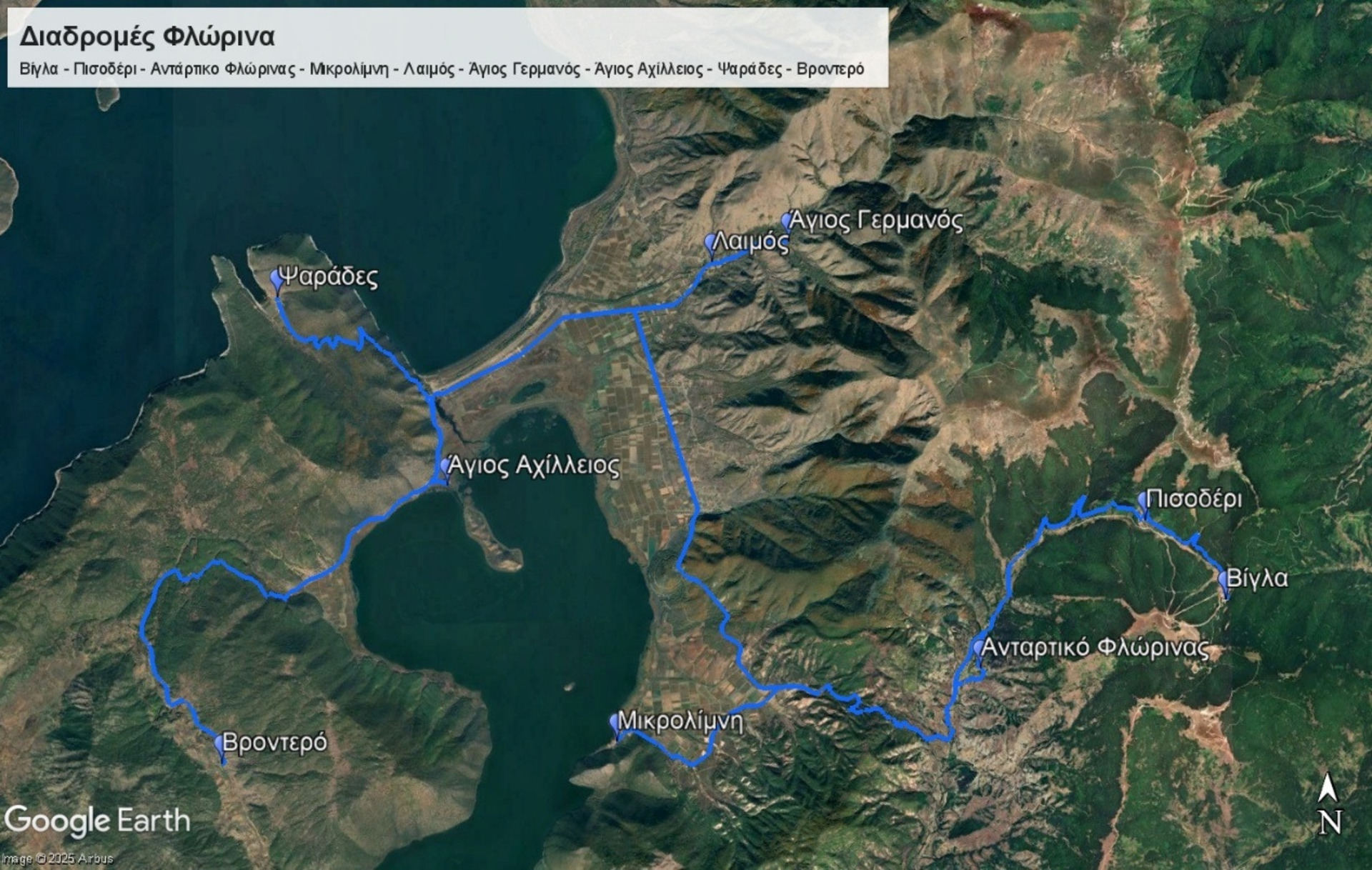The Wandering Gaze

The route covers a total of 100 kilometers and takes about 2 hours by car or motorcycle, without stops or a guide. It is recommended year-round and appeals to visitors interested in local cuisine and gastronomy, regional culture, the natural environment, ecology, birdwatching, and activities such as hiking, mountaineering, cycling, or even snow sports.
The Prespes journey is a magical exploration of about two hours, where at the end the sky meets the water and nature embraces history. In the Prespa National Park, the twin lakes and their wetlands host rare bird species while shaping the lives of farmers and fishermen. It is one of Greece’s most beautiful places—a true paradise for lovers of nature, peace, and serenity.
The route passes through Vigla and Pisoderi, where the ski center comes alive in winter, offering thrills in the snow. It continues to Antartiko, a traditional village with distinctive architecture, and then to Mikrolimni, where the tranquil waters of Little Prespa touch the land. At Laimos, daily life flows to the rhythm of the water, while in Agios Germanos the square, the Byzantine church, and the old watermill recount timeless stories. On the island of Agios Achilleios, among the ruins of Byzantine basilicas rising from the water, myth and life merge into one. At Psarades, the route reaches Greece’s farthest frontier, where fishing boats lead visitors to hermitages carved into the cliffs overlooking Great Prespa. Toward Vrontero, monuments like the caves of Zachariadis and Kokkalis recall some of the darkest chapters of the 20th century. Here, at the tri-border, nature invites you to experience the ultimate of all senses.
The cuisine of Prespes is the body and soul of its people. Beans—whether the famous giant-elephants and large flat beans, or the red, black, and speckled varieties—are the region’s culinary treasure. Baked as fasoulontavas with tomato and herbs, in salads with parsley and onion, or in surprising variations such as bean spoon sweets, they bring the flavors of the watery landscape to the table. From the lakes come exquisite freshwater fish, while local beef forms the base of dishes like makalo meatballs. PDO cheeses and tsipouro accompany meals, and spoon sweets made from local fruit complete an experience as unforgettable as the Prespes themselves.
Here, every flavor, every landscape, and every story is part of the great canvas of a place unique in Greece—and in the world. Do not leave without taking some of the region’s unique products with you, and if you wish to stay longer, you will find clean, welcoming guesthouses and agritourism lodgings across the villages.
Route Products
PDO Products: Batzos cheese, Feta cheese, Kasseri cheese, Manouri cheese, Kefalograviera of Western Macedonia
PGI Products: Prespa giant-elephant beans, Prespa large flat beans, Wines of Macedonia
Specialties: Red beans, speckled beans (barbounia), black giants, papoudia, lentils, chickpeas, wild mushrooms, trahana, hilopites, freshwater fish, honey of Antartiko, game, spoon sweets, tsipouro
Route Delicacies
Fasoulontavas: The quintessential Prespa dish, showcasing the region’s star product—beans. After soaking overnight and boiling with onion, oil, and spices, the beans are baked in a clay pot with tomato, olive oil, and herbs until caramelized. Served with fresh bread and local wine or tsipouro, it is an authentic and unforgettable meal.
Makalo Meatballs with Prespa Beef: Made from the lean, flavorful beef of Prespa’s short-horned cattle, raised on lakeside pastures and mountain meadows. The meatballs are simmered in a rich sauce of oil, flour, garlic, and tomato, creating a dish that perfectly represents the region’s culinary tradition.
Cured Tsironia: Small fish of Prespa, 15–20 cm long, considered a classic meze and an honest expression of local gastronomy. While sometimes fried, the finest version is cured: salted and dried, then prepared with tomato and peppers or simply with oil, vinegar, and chili flakes. Caught in schools using the traditional kedra or pelaizia method, their curing makes them a rare delicacy to enjoy with tsipouro.
